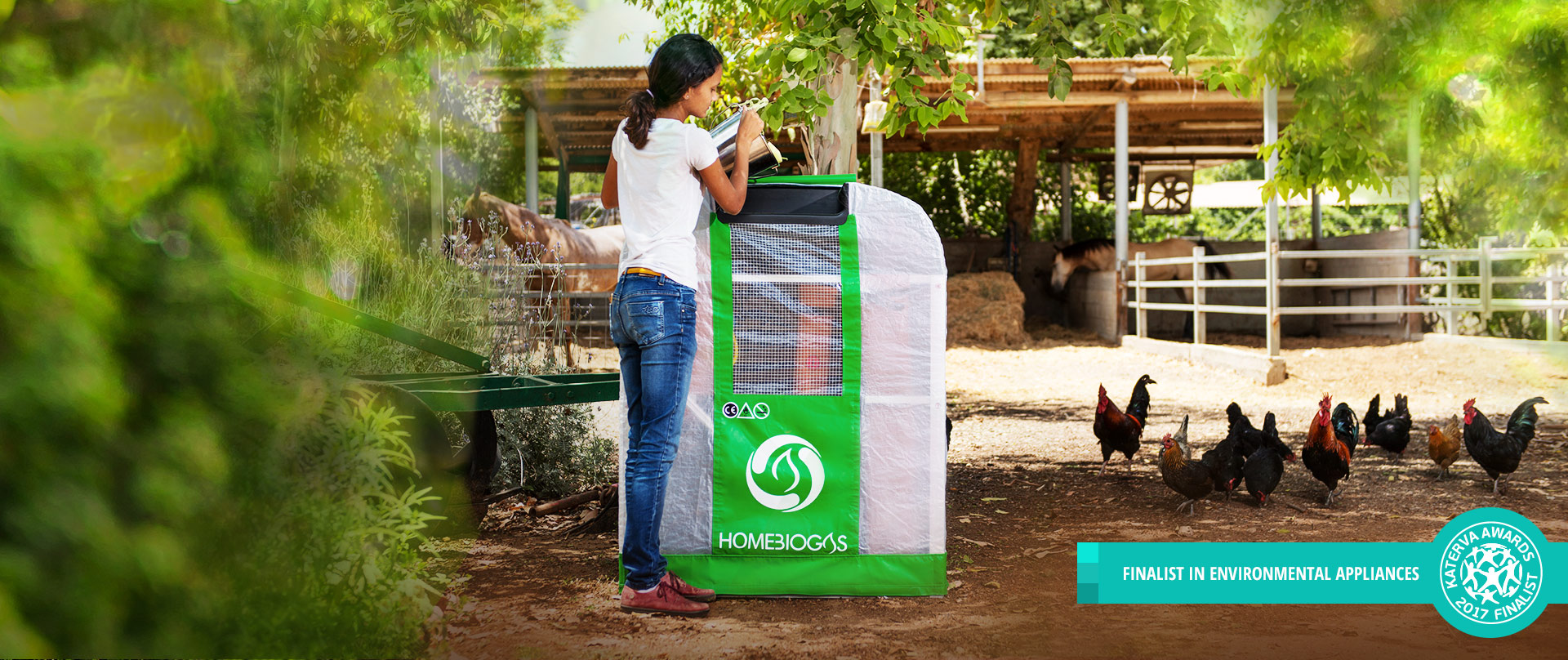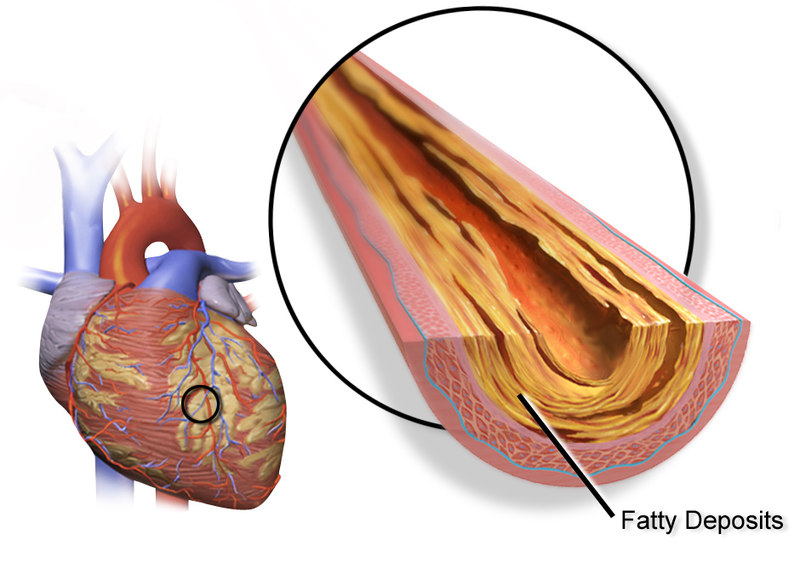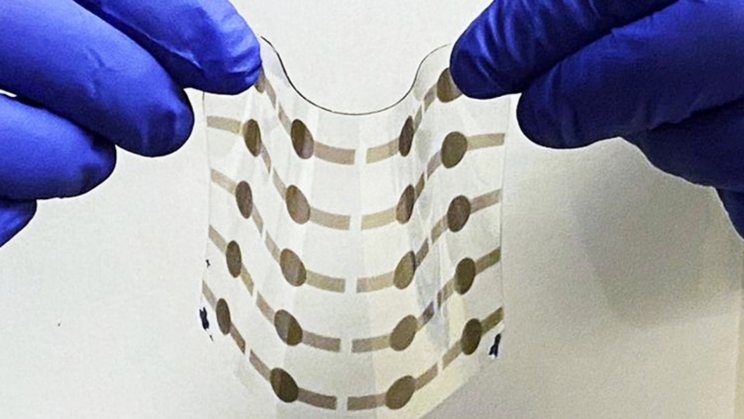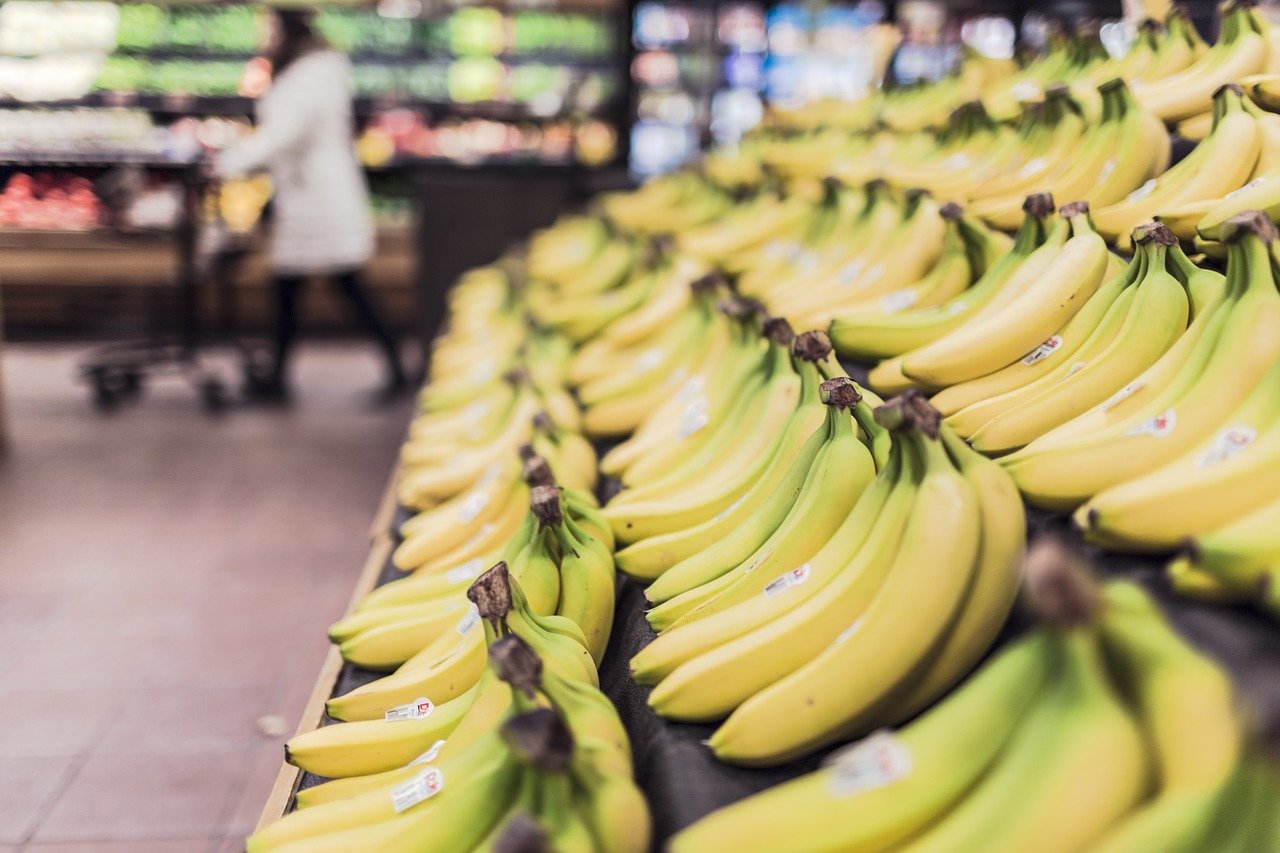An ecologist’s dream is that human systems will model the closed loop systems of Mother Earth. But, sometimes the only way to get entrenched industries and governmental policies to change is for the public to take the lead and create alternative demand. “If the people lead, the leaders will follow.”
Solar and wind innovations have made leaps forward both on the macro and micro scale. But the biodigester has been primarily used on a large scale in cities — except for a few do-it-yourself tinkerers.
Now, there is HomeBiogas 2.0, a practical option designed for the individual homeowner. It comes to you in a box with all the tools required for set-up in just a couple of hours, and a detailed instruction manual to ensure success even by inept builders. And, it comes with a 24-month warranty.
The inflatable device looks like the son of Jabba the Hutt with a funnel-shaped snorkel for a mouth. The deflatable aspect allows for packing it up and moving it or storing it over the winter in colder regions. And, the kids will love to feed The Blob by sending their leftovers down the chute. As the waste breaks down it creates methane gas that can be used as fuel for cooking.
The maker claims that “Every kilo (2.2 lbs.) of food waste produces about 200 liters of gas,” enough for about an hour of cooking, and that each biodigester unit “reduces carbon emissions by six tons annually.” The average production of gas provides about two hours of cooking time per day. The tank can store up to 500 liters at a time.
What differentiates using the HomeBiogas 2.0 from pile composting and vermiculture (worm farming) is that you can add meats, fish, and fats, something frowned upon with the other methods because it attracts rodents and other unwanted creatures. You can even add animal manure to the mix.
And then there is the benefit of using the methane gas for cooking and being rewarded with composted liquid fertilizer as the final byproduct. What’s not to love about that? And, of course, the whole savings to the planet is a fundamental motivation.
The process is fairly straightforward. You put your waste in the chute, where it falls to the bottom of the tank. The warmth of the sun heats the biodigester and the waste inside. The excited microbes then digest the waste and give off methane gas in the process, which remains stored in the tank until it is hooked up to a stove and lit on fire for cooking. Then you collect the liquid fertilizer “leftovers” to feed your garden.
There is little concern for the safety of using methane biogas for cooking. In order to be liquified, the various types of LPG (liquid petroleum gas), such as butane and propane, must be kept under extreme pressure, whereas biogas is stored at low pressure. LPGs sink when released into the air, making them susceptible to combustion, but methane dissipates immediately upward into the air, so no gas lingers to ignite unintentionally. This is why you need to wait before relighting your gas grill; the propane sinks and accumulates, exploding when lit. So biogas is actually even safer.
So what’s the drawback? Because the biodigester needs warmth to generate the heat needed to promote the growth of digestive bacteria, you have to make some modifications for cold climates, or else shut down during those frosty periods. The HomeBiogas website suggests you either add an electric aquarium heater to the tank or contain the whole unit in a heated greenhouse or other vented warm space.
And, there is a bit of maintenance required. It is recommended that you replace the gas filter annually. It filters out the stinky hydrogen sulfide. Every three years you should clean out the bottom sludge and use it as fertilizer. And the chlorine tablet used to purify any detrimental bacteria in the liquid fertilizer should be replaced when completely dissolved. Not so bad, really.
Since it is portable and requires no electricity, the HomeBiogas digester should be an asset to both rural and urban households.
Right now the company is offering a special for pre-orders of the HomeBiogas 2.0, which will be available in May of 2018. The price is reduced from $790 to $520, and the kit comes complete with a single burner stove, “growth boosting” starter beads to get the microbes tickled, a filter for the gas and one for the fertilizer, and a foam insulating sheet.
Though it may not be cost effective for you as a fuel source, it has other benefits that might make it worth the investment. There’s just something very satisfying to know you can be cooking by the “garbage in, gas out” method.







